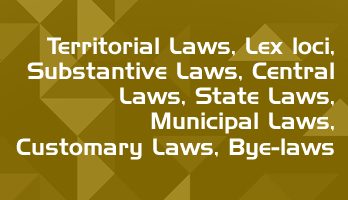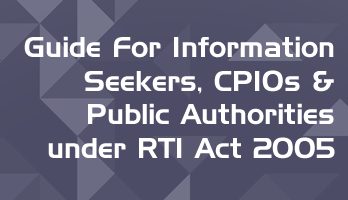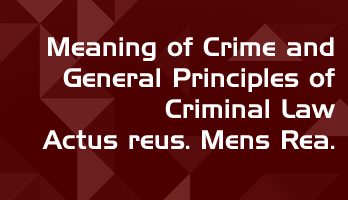Free Full Course Available on LawMint's YouTube Channel
How to Land Your Dream LLB Internship in a Top Law Firm
- Part 1 - Introduction
- Part 2 - Internship Planning
- Part 3 - Internship Research
- Part 4 - Building Your Profile
- Part 5 - The Email
- Part 6 - The Resume
- Part 7 - The Cover Letter
- Part 8 - The Interview
- Part 9 - Self Development
Practical and comprehensive course, with real examples and step-by-step analysis of the complete internship application process. Check out LawMint's YouTube channel now!
The Right to information (RTI) was much more sought than ever. This was due to increasing volume of corruption and unwanted delays in the work. The public at large was getting harassed, mentally as well as physically and also financially. To put a check on it RTI act enacted by Government of India in year 2005.
Right to Information Act 2005 mandates timely response to citizen requests for government information.
The Universal Declaration of Human Rights was adopted in 1948 providing everyone the right to seek, receive, information and ideas through any media and regardless of frontiers.
The International Covenant on Civil and Political rights 1966 states that everyone shall have the right to freedom of expression, the freedom to seek and impart information and ideas of all kinds.
In Mr. Kulwal v/s Jaipur Municipal Corporation case, the Supreme Court ruled that freedom of speech and expression provided under Article 19 of the Constitution clearly implies Right to Information, as without information the freedom of speech and expression cannot be fully used by the citizens.
Right to Information Act 2005
This Act is comprised of six Chapters and total of thirty-one Sections and two Schedules.
Chapter – I – Preliminary
The first chapter explains preliminary aspects of the act like, definitions, titles and commencements etc.
The second chapter explains right to information and obligations of public authorities, sections so covered are, right to information, obligation of public officer, designation of public officers, request for obtaining information, disposal of request, exemptions, grounds for rejection of application, severability and third-party information.
Chapter – III – The Central Information Commission
The third chapter explains about the central information commission, sections covered under this chapter are, constitution of central commission, term of office, conditions of service and removal of CIC.
Chapter – IV – The State Information Commission
The fourth chapter explains state information commission which operates at the state level. This chapter is comprised of similar sections of chapter three but at state level, like constitution of state commission etc.
Chapter – V – Powers and functions of the Information Commissions, appeal and penalties
The fifth chapter explains the various powers and functions of CIC at the central level and also at the state level as well as penalties and appeals are also covered under this chapter. The chapter is comprised of the sections like, power and functions of CIC, appeals and penalties.
Chapter – VI – Miscellaneous
The last and the sixth chapter is about miscellaneous aspects of the act. This is longest chapter of the act that is contains 11 sections.
The sections are, bonafide protection of action, overriding effect, jurisdiction of courts, non application of act on certain organizations, monitoring and reporting, appropriate Government to prepare programmes, power to make rules by appropriate government, power to make rules by competent authority, lying of rules, power to remove difficulties and repeal.
Guidelines for the RTI Act
The Government of India has also issued guidelines to the information seekers to ease their work and efforts in the process. These guidelines are comprised in the official public document, “How to Get Information from the Public Authorities Of the Central Government Under the Right to Information Act, 2005”
This document, which is comprised of three sections, explaining the various aspects of the process to ease out the hurdles in obtaining the information by the information seeker.
The list of topics under the three sections is as below :
GUIDE FOR INFORMATION SEEKER
- Object of the Right to Information Act
- What is information
- Right to Information under the Act
- Exemptions from Disclosure
- Central Public Information Officers
- Assistance Available From CPIOs
- Suo Motu Disclosure
- Method of Seeking Information
- Fee for Seeking Information
- Format of Application
- Disposal of the Request
- First Appeal
- Second Appeal
- Complaints
- Disposal of Appeals and Complaints by the CIC Important Web-sites
GUIDE FOR THE CENTRAL PUBLIC INFORMATION OFFICERS
- What is Information
- Right to information under the Act
- Information Exempted From Disclosure
- Right to Information Vis-a-vis other Acts
- Rendering Assistance to Applicants
- Assistance Available to CPIO
- Suo Motu Disclosure
- Fee for Seeking Information
- Contents and Format of Application
- Invalid Applications
- Transfer of Application
- Supply of Information
- Supply of Part Information by Severance
- Time Period for Supply of Information
- Third Party Information
- Appeals and Complaints
- Imposition of Penalty
- Disciplinary Action Against CPIO
- Protection for Work Done in Good Faith
- Annual Report of the CIC
GUIDE FOR THE PUBLIC AUTHORITIES
- Right to information under the Act
- Information Exempted From Disclosure
- Timely Supply of Information
- Right to Information Vis-a-vis other Acts
- Maintenance and Computerisation of Records
- Suo Motu Disclosure
- Dissemination of Information
- Publication of Facts about Policies and Decisions
- Providing Reasons for Decisions
- Designation of CPIOs etc.
- Acceptance of Fee
- Transfer of Applications
- Compliance with the Orders of the CIC
- Annual Report of CIC
- Development of Programmes etc.
The Right to Information Act, 2005 was enacted with the aim of bringing information to the citizens. The main reasons for the enactment of this Act (RTI) were increasing volume of corruption, unwanted and un-necessary delay in the work and lack of transparency in the functioning of Government and its Agencies.
RTI Citizens Gateway website at rti.gov.in
The website is an initiative taken by Department of Personnel and Training, Ministry of Personnel, Public Grievances and Pensions to provide a– RTI Portal Gateway to the citizens for quick search of information on the details of first Appellate Authorities, PIOs etc. amongst others, besides access to RTI related information / disclosures published on the web by various Public Authorities under the Government of India as well as the State Governments. The aim of RTI is, “Bringing Information to the Citizens”.
Questions
Explain briefly the reasons for the enactment of Right to Information Act, 2005.
The main reasons for the enactment of Right to Information were (i) increasing volume of corruption, (ii) unwanted delay in the work and (iii) lack of transparency
Name the official Public Document containing Guidelines for the information seekers.
“How to get Information from the Public Authorities of the Central Government under the Right to Information”
State briefly the main aim of passing the Right to Information (RTI) Act, 2005.
The aim of Right to Information Act, 2005 is to ‘bring information to the citizens’.
Free Full Course Available on LawMint's YouTube Channel
How to Land Your Dream LLB Internship in a Top Law Firm
- Part 1 - Introduction
- Part 2 - Internship Planning
- Part 3 - Internship Research
- Part 4 - Building Your Profile
- Part 5 - The Email
- Part 6 - The Resume
- Part 7 - The Cover Letter
- Part 8 - The Interview
- Part 9 - Self Development
Practical and comprehensive course, with real examples and step-by-step analysis of the complete internship application process. Check out LawMint's YouTube channel now!
Acknowledgement : This article is adapted from Swayam-NIOS course material.












